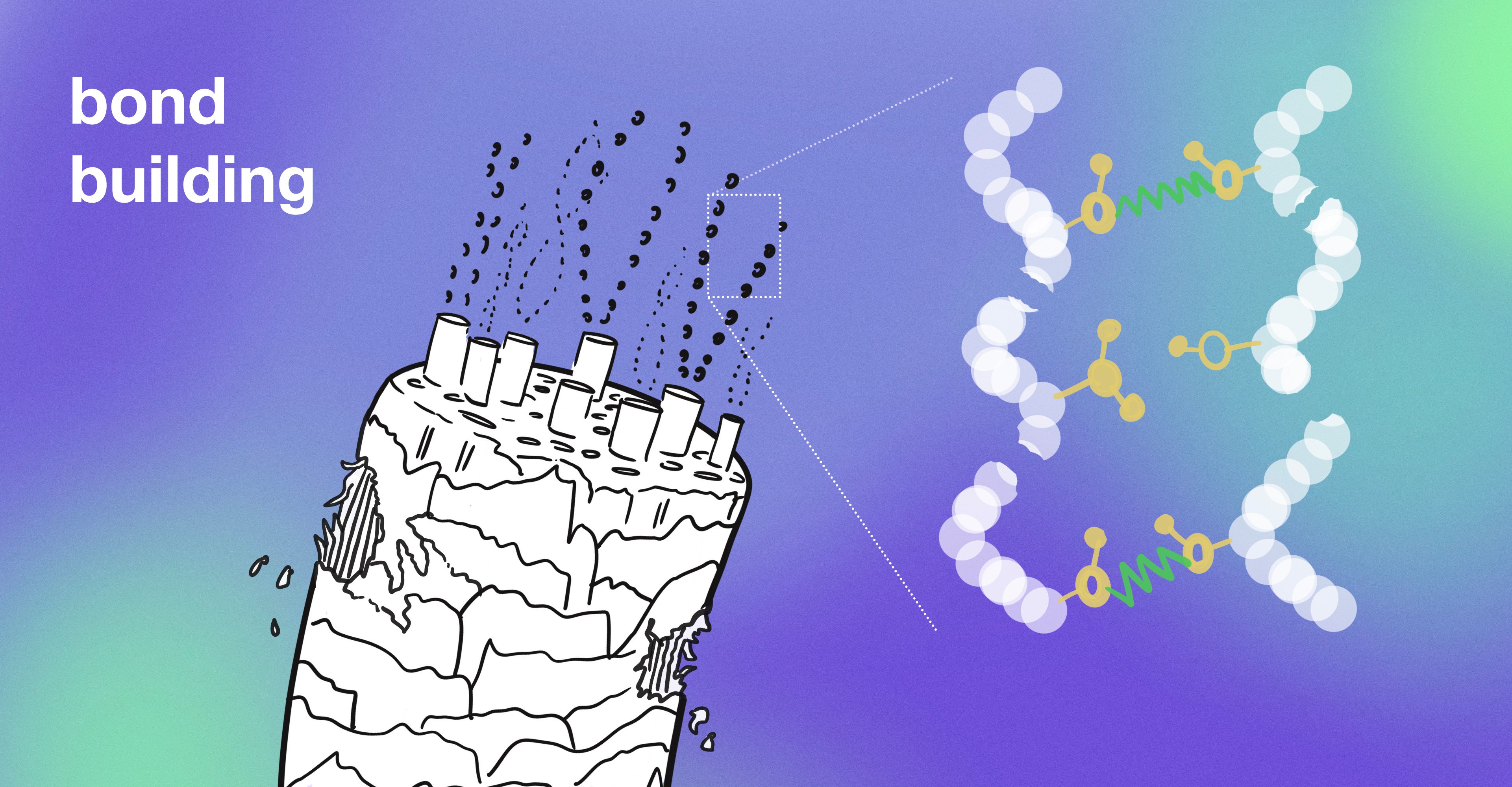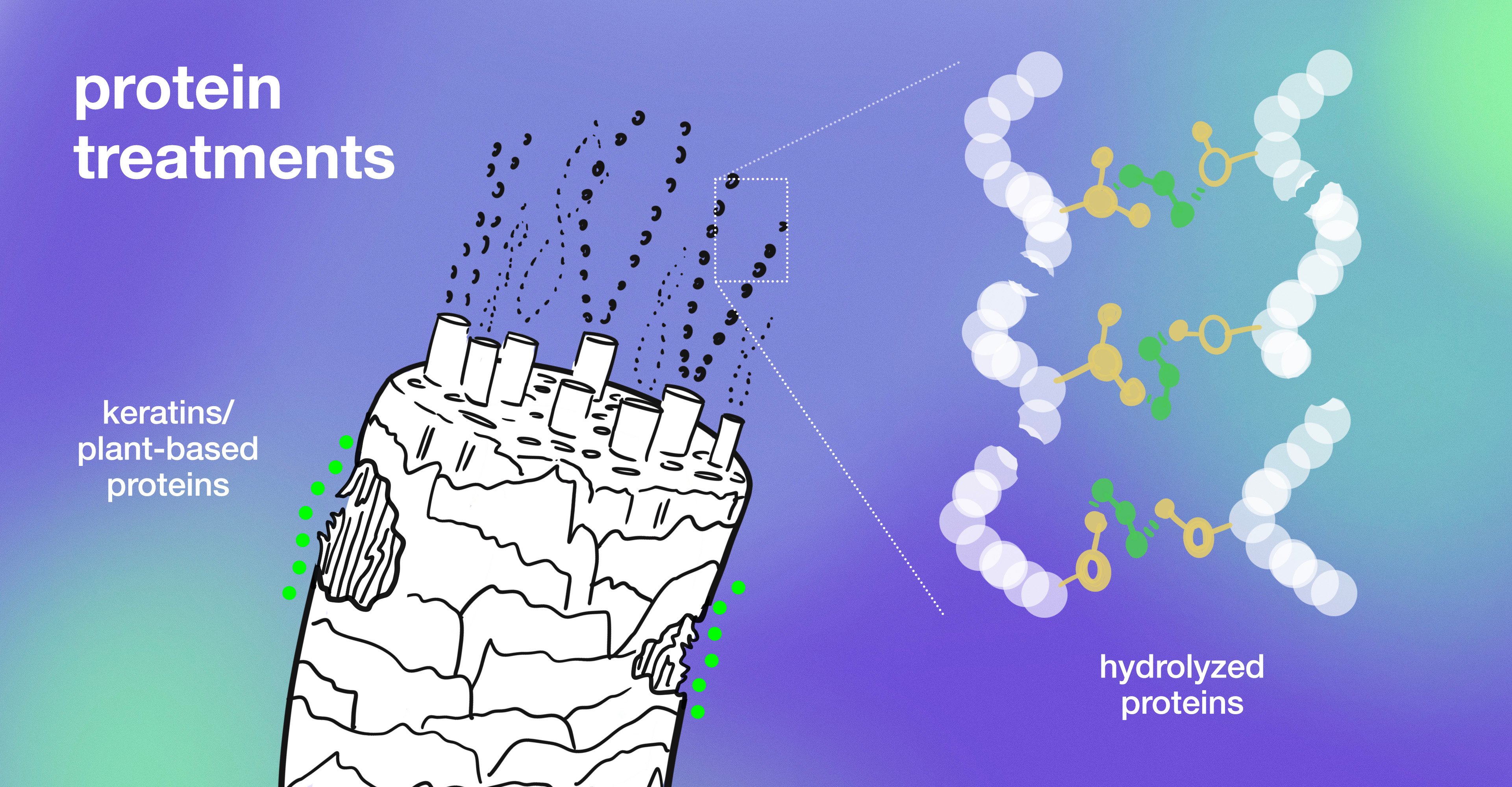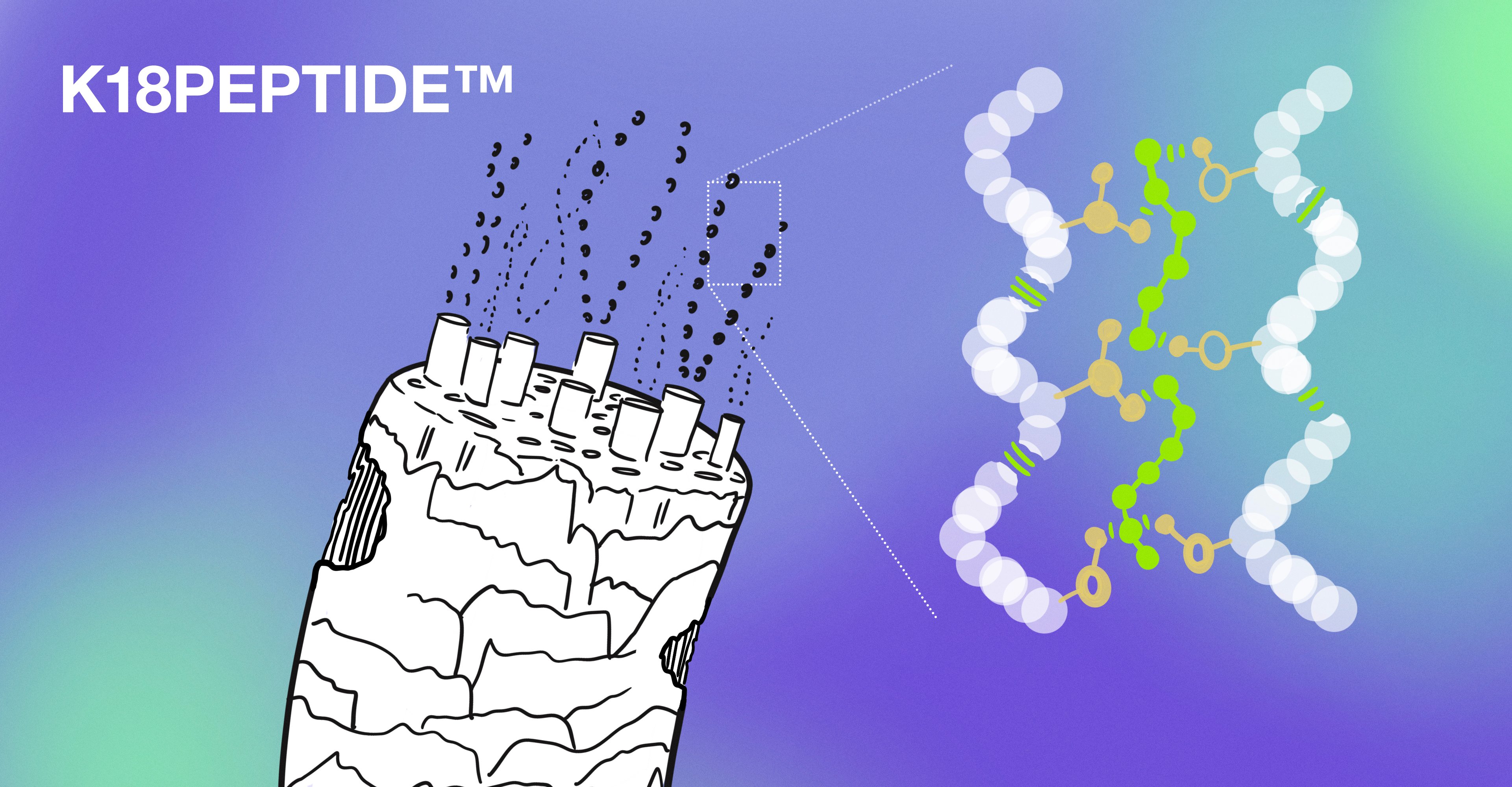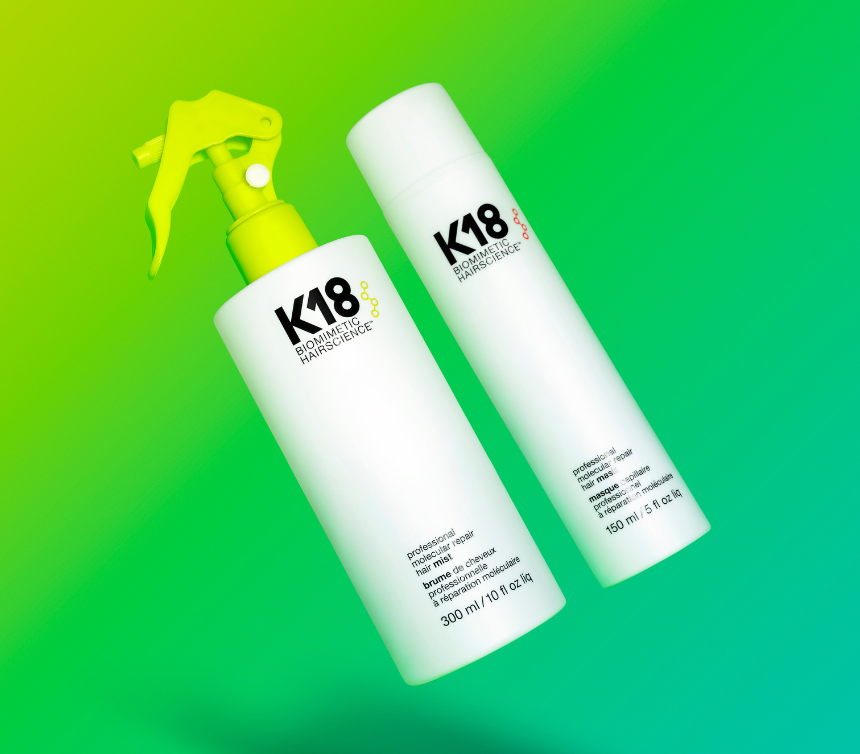Not all haircare products are created equal. Here’s the ultimate guide to hair repair methods.
When it comes to repairing hair damage—think chemical (bleach + color, perms, relaxers), mechanical, or heat-induced breakage—products often promise repair and long-lasting results thanks to their strengthening features. But what does this mean exactly? Whether you’re a hair repair novice or consider yourself an expert in the healthy hair department, you’ve likely heard of or even tried hair repair products, which promise to leave hair looking and feeling softer and more resilient.
Scientifically, there are only a handful of truly “reparative” technologies that help reinforce hair’s internal protein structure to improve strength. Each works in its own unique way and has different capabilities and limitations. Bond builders, for instance, can be broken up into two categories, while proteins offer a distinct path to hair strength and protection. The key details to understand for each technology are where and how they work. The greatest limitation? Their tendency to provide isolated support to different elements of hair’s structure (which is responsible for its strength), leading to results that are more likely to wash away in the shower.
Below, we break down a few methods you may have turned to in the past to heal your hair concerns. Learn more about them, including their similarities and differences, and if they can truly and effectively work on your mane.

bond building
Hair is made up of proteins, whose structure is held together by many different bonds. These include peptide bonds, disulfide bonds, hydrogen bonds, and ionic bonds, to name a few. Bond builders can work below the surface in the cortex (aka the inner layer of the hair) to mitigate damage, and they typically target just one type of bond in your hair’s protein structure.
Disulfide bonds, which help stabilize hair’s hierarchical structure, are historically the most common type of bond to be addressed in this category. Several “covalent crosslinkers,” actives that create a strong type of covalent bond (i.e., a disulfide bond), currently exist on the market; at the time of their discovery, these marked the most significant advancement to hair repair tech. By using the term “bond building” in their messaging, “brands are claiming a product or active [in their product] is artificially reinforcing or creating a particular type of bond within the hair,” says Meagan Schlapp, R&D chemist at K18. While this can help preserve structure, she notes, this category misses the greater picture “by zeroing in on just one type of bond.” Ultimately, this makes bond building less effective at reconnecting broken keratin chains because the results are not holistic or lasting.

Acidic active agents like citric acid can help improve the look and feel of hair as well as boost its strength by acting as a different type of bond builder—this time, by working on hydrogen and/or ionic bonds.
The outer layer of the hair, the cuticle, is made of overlapping layers of flat scales or tiles. When hair is dry and relatively undamaged, these cuticles lay smooth and flat; over time, they can lift and chip, leading to dull, dry, damaged hair. When wet, cuticles will also swell or “open,” a process affected by pH. The higher or more alkaline the pH, the greater the cuticular swelling (think more tangles and more breakage, not to mention increased color loss for hair that has been dyed or toned). Conversely, the lower or more acidic the pH experienced by hair, the less the cuticle swells, minimizing tangles, breakage, and color loss. Increased amounts of acidic agents like citric acid used in products can balance out and bring the hair’s pH down, (optimal hair pH ranges from 4.5 to 5.5, says Schlapp) leading to smoother, softer, and shinier hair.
Organic acids like citric acid also have temporary bond building results. At lower pH, the ratio of ionic bonds in hair proteins is improved, which contributes to stronger protein structure. Normally, hydrogen bonds are easily disrupted by the presence of water molecules (for example in humidity or during a shower), which makes wet hair weaker. This process is fortunately reversible: once hair dries, the internal hydrogen bonds reform. Yet it still leaves hair in its most vulnerable state while many people are subjecting it to damaging treatments, from salon services to at home post-shower blow-dry brushes. Acidic bonders can form hydrogen bonds with hair proteins, preventing some of the water molecules from disrupting those very bonds and further weakening hair. Still, we know that hair’s protein structure is supported by a network of different bonds, and acids offer one piece of that whole puzzle.

protein treatments
Proteins, another broad category of ingredients that can be found in products, offer different benefits to hair. Proteins are considered biological macromolecules (very large molecules) made up of building blocks called amino acids linked together by different bonds; there are a great many different proteins that exist in the natural world. In fact, human cells alone are capable of producing over one million different proteins! This massive variety comes down to a protein’s size and structure–like letters in a word, or words in a sentence, the type, order, and number of amino acids in a protein sequence dramatically change its behavior and properties.
Generally speaking, full-size proteins like these are too large to pass through hair’s outer cuticle; they remain at hair’s surface, forming a protective barrier and filling in holes in the cuticle. Some common proteins that may be found in products include keratins and plant-based proteins like rice protein.
You might also see proteins listed on a product ingredient list as “hydrolyzed” proteins–this means that the larger proteins have been broken up into smaller bits and pieces. These protein fragments are much shorter chains than their parent proteins and are small enough to pass through the cuticle and make their way into the cortex. The chopping up process isn’t specific, so you end up with a mixture or “soup” of different pieces. While these pieces can also fill in small gaps and add moisture, they are too short on their own to create a multi-point connection with hair proteins or to reconnect very damaged ones, so they are not designed to significantly increase hair strength.

K18 molecular repair to the rescue
If you’re actively searching for a durable, long-lasting solution to hair damage—and who isn’t?—consider K18. The K18PEPTIDE™ provides molecular repair, a term that speaks to an understanding that “the biological molecules that make up our hair are protein, and proteins create this really intricate structure that determines its function,” explains Schlapp. To put it simply, K18 molecular repair is a biotech-powered and biology-first approach that understands what hair needs on a biological level, making it the most advanced form of hair repair today.
“The K18PEPTIDE™ is, first of all, biomimetic. It's identical in structure to a subset of proteins that exist naturally within the hair. And so because of that, it's able to interact in all of the ways that hair protein architecture holds itself together already,” Schlapp says. “It's able to replicate that structure, forming many different kinds of bonds with hair proteins—and that's why we see more effective and more lasting repair.”



